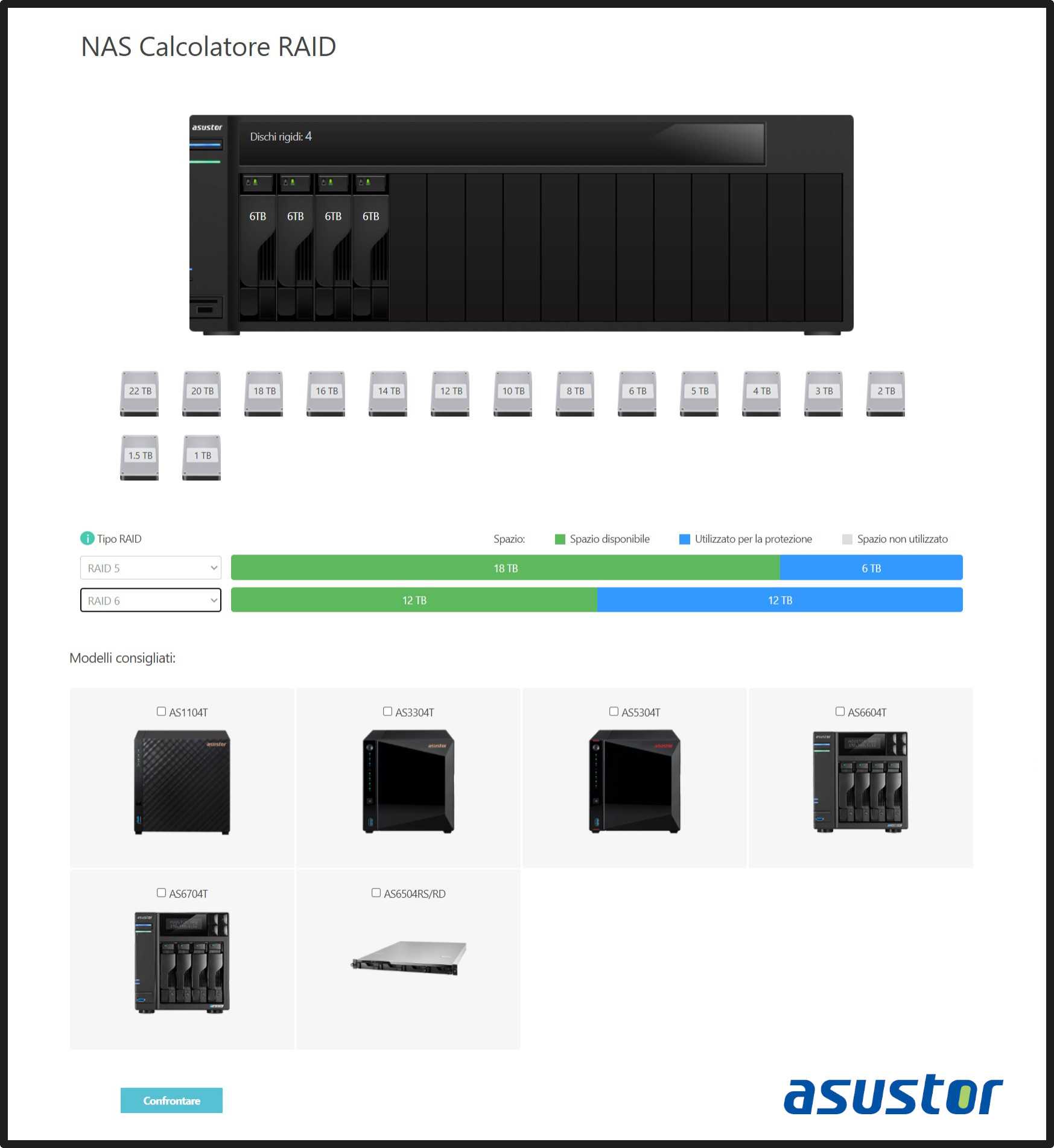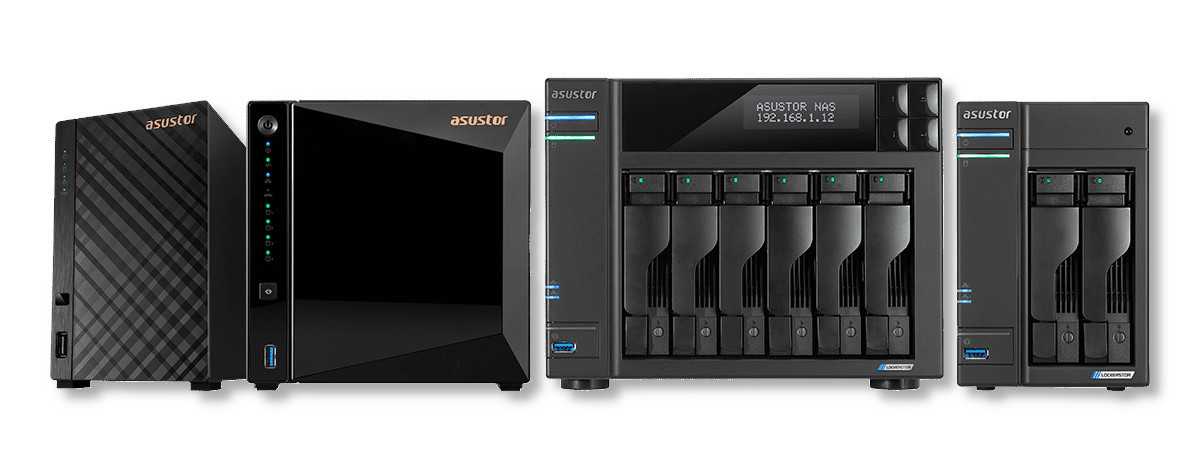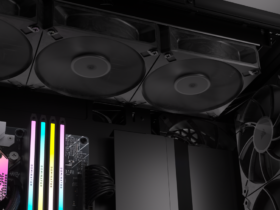
ASUSTOR presents RAID Calculator, an online configurator that guides users in choosing the disks for their NAS
Deciding how many disks to mount on the NAS and their capacity can be a problem for the less experienced. But thanks to this configurator, the less able users will be able to easily size their storage arrays and identify the most suitable ASUSTOR NAS to meet their needs.
Details about the new ASUSTOR RAID
ASUSTOR is one of the leading and most innovative NAS manufacturers. Established in 2011 with a direct investment from ASUSTek Computer Inc., it has come up with RAID Calculator. This is a useful and practical online configurator! In just a few moments, it also allows less experienced users to decide, according to their needs, the number and sizes of disks to install on their NAS. When you decide to buy a NAS, very often you are faced with the dilemma relating to drives and disks and how many to buy, with what sizes and how to configure them. The most advanced operating systems, such as ASUSTOR ADM 4.2, are able to simplify all the configuration procedures to the maximum. But having the opportunity to know in advance the different possibilities that RAID (Redundant Array of Independent Disks) technology offers is particularly important in order to make the right choice. Always taking into account the desired storage space and levels of protection.

RAID technology
In fact, RAID technology allows you to combine multiple hard drives into a single logical unit for the purpose of improving performance, levels of protection, and/or data storage capacity. There are several RAID levels, each of which uses a specific architecture to distribute data across multiple disks. RAID 0, for example, divides data into blocks and writes them alternately to disks, improving read and write performance, but provides no data redundancy. RAID 1, on the other hand, creates a mirror copy of data from one disk onto another, improving system reliability but reducing total storage capacity. While RAID 5 and RAID 6, which require at least 3 and 4 disks respectively, combine redundancy and data protection features differently.
New ASUSTOR RAID: simple and intuitive interface
The RAID Calculator is designed to allow users to clarify the different possibilities and simulate different disk configurations. Thus able to satisfy different needs in terms of storage space and data protection. In fact, thanks to an intuitive interface, this online configurator allows you to choose from a set of disks of different capacities and install them with a click on a virtual NAS. In real time, based on the disks that have been chosen and the type of RAID level selected, the configurator is able to show:
- the available storage space,
- the one used for data protection
- and the space that would remain unused.
Simplicity and effectiveness
With the same simplicity with which the disks can be installed on the virtual NAS, it is then possible to uninstall them to try other combinations. Until the ideal configuration has been found. At that point, the RAID Calculator will show the most suitable ASUSTOR NAS and allow you to compare them according to the hardware equipment, the type of connectivity they provide, the software features and much more.

The ASUSTOR RAID Calculator is available at the following link. And you ? What do you think of this new ASUSTOR RAID ? Let us know with a comment below and always stay tuned to techgameworld.com for other news and reviews from the world of technology (and beyond!).
The ASUSTOR article: presented the new RAID comes from techgameworld.com.















Leave a Reply
View Comments